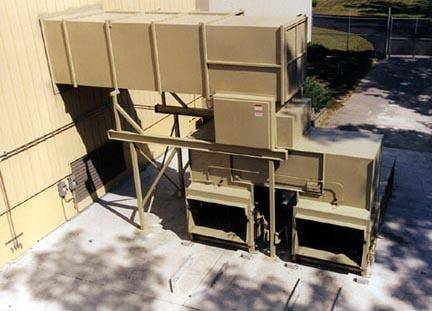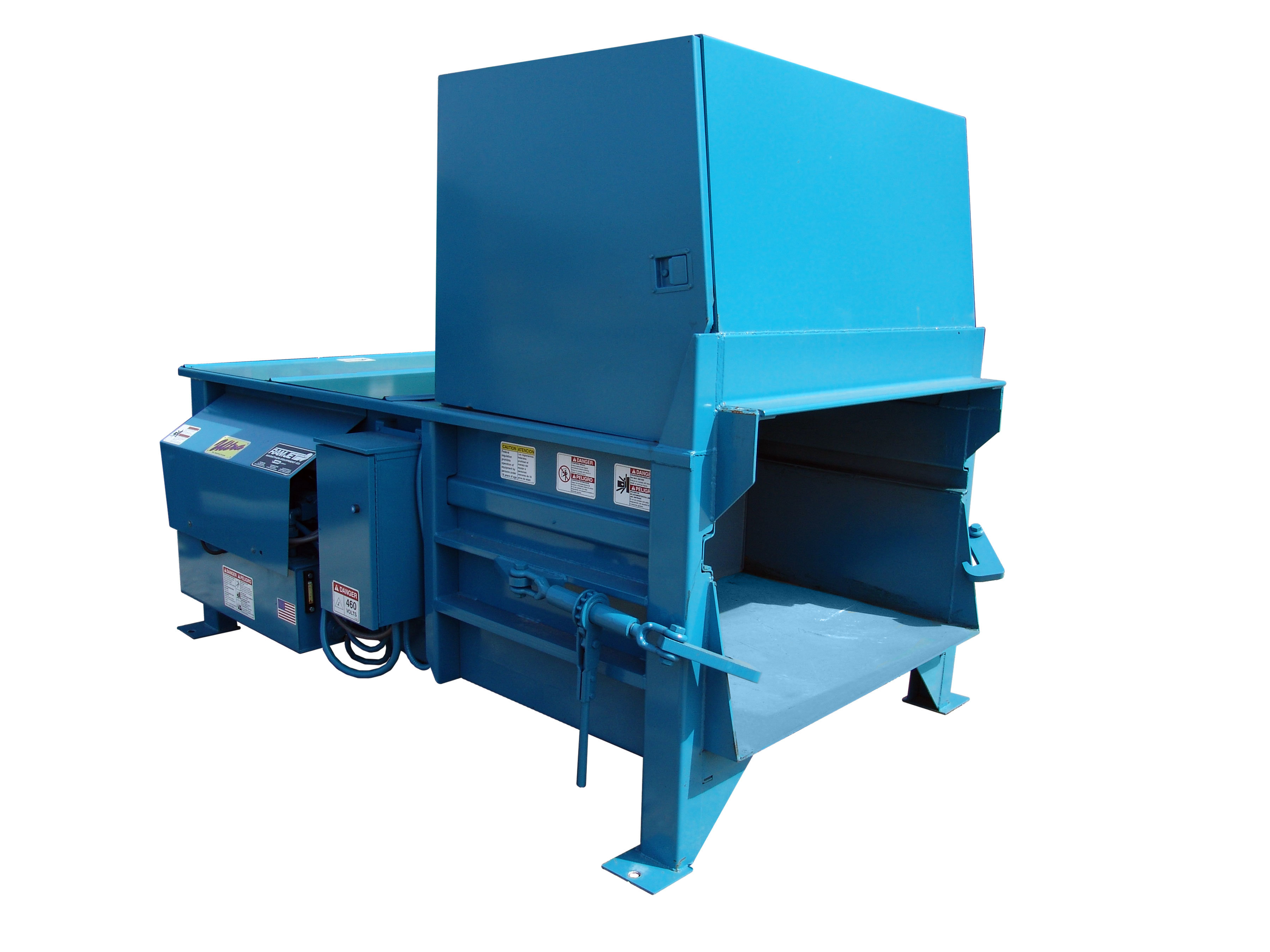How Commercial waste compactor equipment reduces costs and enhances workflow
Recognizing the Numerous Uses Waste Tools in the Recycling Market
The recycling sector relies greatly on specialized waste devices to maximize processing and recuperation. Each device, from shredders to balers, offers a distinctive function that enhances general effectiveness. Recognizing these functions is essential for enhancing sustainability efforts. Commercial garbage compaction equipment. As modern technology developments, brand-new developments arise, promising to change conventional methods. This evolution elevates essential concerns concerning the future of waste monitoring and its effect on ecological preservation. What modifications exist in advance for this important market?
The Duty of Shredders in Product Processing
Shredders play a critical function in the reusing sector by successfully processing different sorts of waste materials. These devices are created to minimize large things, such as plastics, metals, and natural waste, into smaller, manageable items. This size decrease is crucial for subsequent recycling procedures, as it permits much easier handling and sorting. In addition to promoting recycling, shredders improve safety and security by decreasing the threat of injury connected with taking care of large waste things.
Shredders contribute to environmental sustainability by guaranteeing that products are processed in a way that makes best use of source recovery. They can manage a diverse variety of products, making them flexible devices in waste monitoring centers. The reliable procedure of shredders not just enhances the reusing procedure however likewise enhances the total effectiveness of waste diversion efforts, promoting a round economic situation. Their significance in product handling can not be overstated, as they work as a fundamental step towards lasting waste management practices.

How Balers Enhance Performance in Waste Administration
Balers substantially enhance efficiency in waste administration by condensing different products right into bales, which streamlines storage space and transportation. By pressing recyclables such as cardboard, plastics, and steels, balers substantially minimize the volume of waste. This compression not only optimizes space in reusing centers but additionally minimizes the number of journeys required to move materials, causing lower fuel expenses and reduced environmental influence.
Additionally, balers add to boosted safety and security in waste monitoring operations. Small bundles are easier to take care of and stack, minimizing the threat of mishaps associated with loose materials. The uniform size of bales enables much more reliable loading and unloading procedures, enhancing procedures within reusing centers. Furthermore, balers can enhance the overall high quality of recyclables, as correctly compacted materials are less likely to be contaminated. In general, balers play a necessary role in maximizing waste management methods, advertising sustainability in the recycling sector.
Conveyor Equipments: Simplifying the Recycling Process
Incorporating advanced machinery like balers considerably boosts waste administration procedures, however the performance of the reusing procedure is additionally enhanced with the usage of conveyor systems. These systems play an essential function in the seamless transport of products within recycling facilities. By assisting in the activity of numerous waste types, conveyor systems minimize manual handling and reduce the danger of contamination throughout the recycling procedure.
Conveyor systems can be personalized to fit the special designs and functional demands of recycling facilities. Their capacity important source to operate continually permits a consistent flow of products, improving efficiency and making sure that sorting and refining equipment receives a regular supply.
Equipped with attributes like flexible speeds and automated controls, conveyor systems can enhance the circulation of materials, considerably improving total performance (Commercial garbage compaction equipment). These systems are essential in contemporary recycling operations, adding and improving processes to reliable waste management.
Arranging Devices: The Trick to Material Recovery
Sorting equipments are crucial elements in the recycling industry, significantly boosting the effectiveness of product healing. These machines play a crucial duty in the separation of different recyclable materials, permitting for a structured process that makes the most of source removal. By utilizing innovative technologies, such as optical sensing units and air classifiers, sorting makers can recognize and classify products based on their structure, weight, and view it now dimension. This capacity guarantees that metals, plastics, and paper items are effectively separated, minimizing contamination and enhancing the quality of recycled output.
The operation of arranging makers considerably lowers the dependence on manual work, which can be both time-consuming and vulnerable to errors - Commercial garbage compaction equipment. Furthermore, the automation offered by these devices speeds up the total recycling process, bring about higher throughput and raised functional effectiveness. Arranging equipments are important in attaining lasting waste administration objectives, making it possible for the recycling sector to successfully recuperate important products while lowering landfill dependency.
Developments in Waste Tools for a Lasting Future
Current advancements in waste tools are driving the reusing market towards a much more lasting future. Developments such as automated sorting systems, which make use of fabricated intelligence and artificial intelligence, boost performance by properly recognizing and separating recyclables. This results in greater healing rates and decreased contamination. Furthermore, developments in compacting technology permit much more reliable transportation of products, decreasing carbon footprints during transit.
Improvements in shredding tools enhance the processing of intricate materials, making it possible for the recycling of items that were as soon as deemed non-recyclable. The combination of renewable energy sources, like solar energy, in waste handling facilities better adds to sustainability objectives. Furthermore, technologies in eco-friendly materials and waste-to-energy modern technologies are reshaping the landscape of waste administration. Jointly, these advancements represent a transformative change within the recycling browse around these guys market, promoting not just ecological defense yet additionally financial practicality for future generations.
Regularly Asked Questions
What Kinds Of Materials Can Waste Devices Take Care Of?
The kinds of materials waste equipment can deal with include plastics, steels, paper, glass, and natural waste. Each equipment type is created for particular materials, enhancing performance and effectiveness in arranging and processing various waste streams.
How Usually Should Waste Devices Be Maintained?

Are There Security Worry About Making Use Of Waste Tools?
Safety issues with using waste devices include possible injuries from mechanical breakdowns, exposure to dangerous products, and poor training. Correct upkeep, regular evaluations, and worker education are important to reduce these risks successfully in any kind of setup.
What Is the Ordinary Lifespan of Recycling Equipment?
The average life expectancy of recycling devices usually ranges from 10 to 20 years, relying on variables such as usage strength, upkeep practices, and technical advancements, which can substantially influence toughness and effectiveness gradually.
Just How Is Waste Devices Powered in Recycling Facilities?
Waste devices in reusing facilities is commonly powered by electrical power, though some devices might make use of different energy resources like gas or diesel. This power makes it possible for efficient processing and transformation of products for recycling purposes.
Shredders play a vital role in the recycling sector by successfully processing different types of waste materials. They can handle a diverse variety of materials, making them versatile devices in waste management centers. Balers substantially boost effectiveness in waste monitoring by condensing various materials right into bundles, which simplifies storage space and transport. The types of products waste tools can deal with include plastics, steels, paper, glass, and organic waste. Security issues with using waste tools include possible injuries from mechanical malfunctions, exposure to harmful products, and insufficient training.